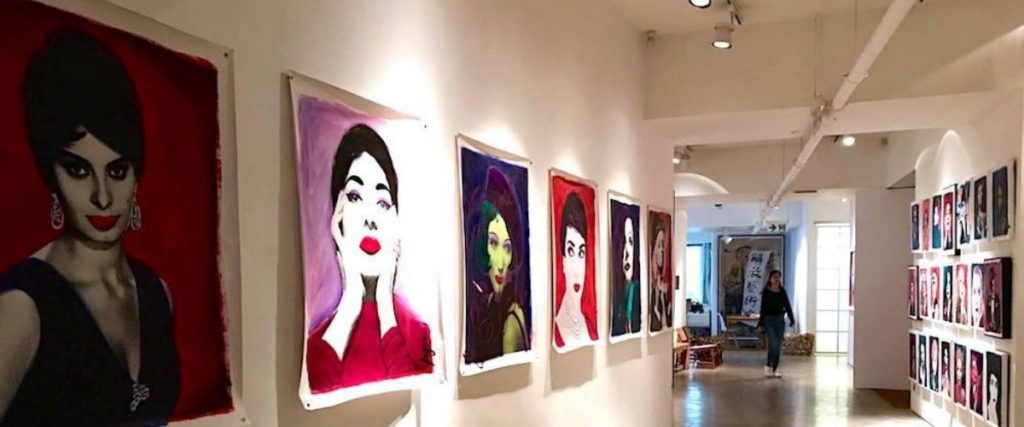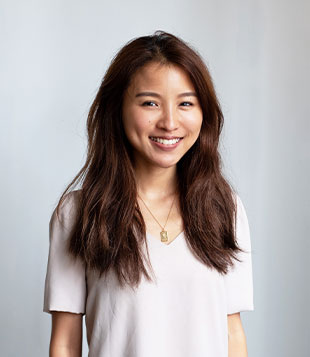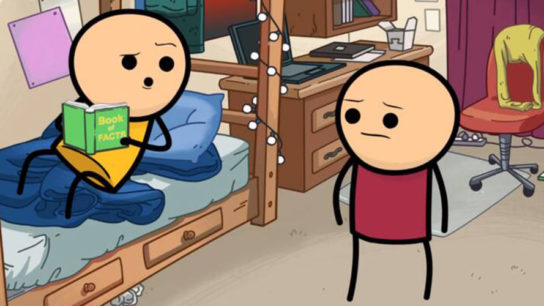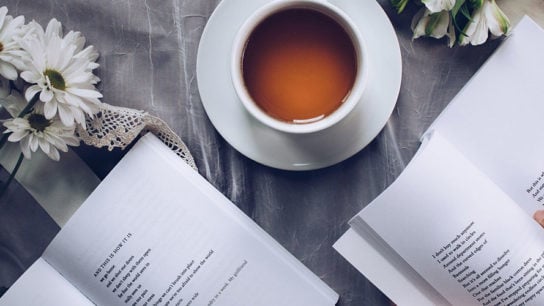Formerly an obscure manufacturing district, Wong Chuk Hang has evolved to encompass a pulsing art scene, home to creatives and artists alike.
Regarded by many as the creative epicentre of Hong Kong, Wong Chuk Hang is quickly garnering quite the reputation for its arts and culture scene, with many international gallerists, artists, and boutique owners opting to relocate there, thanks to the promise of considerably cheaper rents and the recently improved transport infrastructure.
An industrial and residential area situated on the south side of Hong Kong island, just east of Aberdeen and west of Shouson Hill, Wong Chuk Hang is a district on the “up” – and one that’s attracting quite a bit of attention.
But, before we dive into our top spots, let’s take a quick trip down memory lane.
A Brief History of Wong Chuk Hang
Wong Chuk Hang (黃竹坑), which literally translates to “Yellow Bamboo Grove”, was once just a small village overflowing with yellow bamboo. Previously obscured behind Mount Cameron and Mount Nicholson, this burgeoning creative hub can trace its roots all the way back to the Qing Dynasty, specifically the 1860s and ‘70s. Back then, Wong Chuk Hang had more arable land than anywhere else on Hong Kong Island. It was the foundation for thriving farming communities and “leisure farms” where townsfolk would raise livestock and purchase locally grown produce.
In the early 20th century, Chinese merchants began establishing factories in Hong Kong, kickstarting the city’s emergence as a global force in the textile and garment sector. But, it wasn’t until the period between the end of the Second World War in 1945 and the mid-1980s that Hong Kong’s industrialisation really started to pick up. It was during this period that the city experienced an influx of refugees fleeing the communist revolution in China, leading to a serious population boom and rapid postwar industrial growth, notably within the textile, electronics, and plastics sectors. At its peak in the late 1980s, there were more than 1,190 factories operating in Wong Chuk Hang, facilitated by the opening of the Aberdeen tunnel in 1982.
In the span of just a decade, however, the hub would barrel past its heyday as more and more industrial activity started shifting over to China, drawn to the promise of cheap Chinese labour and lower production costs (the average daily wage in Hong Kong in 1981 was HKD 65 compared to HKD 2 in Guangdong in 1980). Seemingly overnight, the rows upon rows of factories and warehouses that once dominated this isolated patch of land emptied out, leaving the former factory district in an apparent state of decline.
Fast forward to 2007, when plans to construct the South Island MTR line with a station in Wong Chuk Hang were finally confirmed. The completion of the station was anticipated to be 2015 (however, it wouldn’t actually begin operation until 28 December 2016). This promise of increased accessibility, coupled with relatively cheaper rents and larger flats, brought this off-the-map spot to people’s attention. In no time, the area experienced a second period of rejuvenation, as an influx of small businesses and enterprising creatives started filing in.
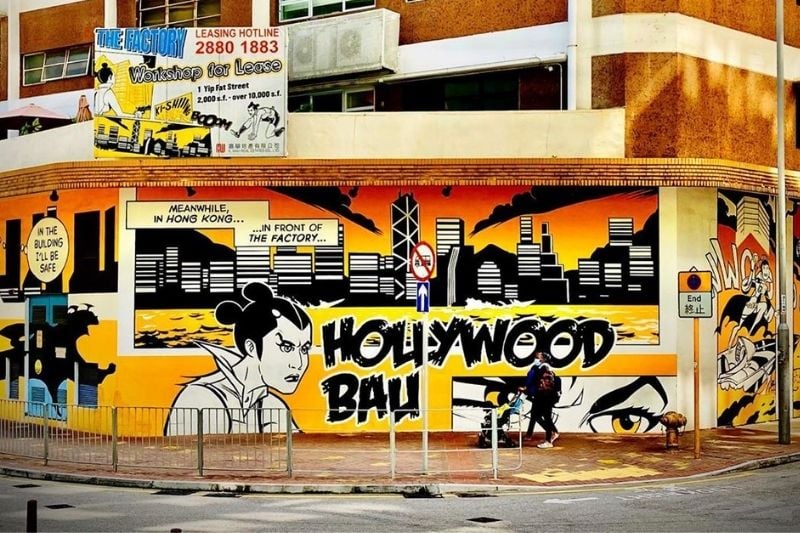
IG: @luckyfred.travelgram
Wong Chuk Hang Today: A Transformation into a Creative Hub
Over the course of a decade, Wong Chuk Hang has transformed from a dreary, dusty town riddled with anaemic factories to a cradle of art, populated by a bevvy of innovative art galleries, experimental showrooms, and creative studios. But, the transformation doesn’t stop here.
Recognising the area’s huge growth potential, a consortium formed by Swire Properties, Kerry Properties, and Sino Land is in the process of developing two residential blocks atop Wong Chuk Hang station, with an expected completion date of 2025. The project is hoping to attract a younger population to the area, further cementing the future of this one-of-a-kind cultural hub.
Now that you know the history, it’s time to get down to the reasons why we love this neighbourhood. If you’re a fellow creative, take a gander through this carefully curated list, and discover why it might even be a good idea for you to consider taking root here.
What to Do in Wong Chuk Hang
Studio 9
Founded by designer Ahlaiya Yung of Salon No. 10 fame, Studio 9 is a multidisciplinary creative studio conceived with the vision of bringing artists of all disciplines together. Functioning simultaneously as an art and design gallery and lifestyle concept showroom, the innovative, multifaceted space also hosts live events, music, and seminars, and is usually frequented by a pretty eclectic mix of patrons on any given day. If you’re seeking a stimulating space to meet like-minded, creative individuals, then Studio 9 is definitely worth a visit.
Address: Union Industrial Building, 48 Wong Chuk Hang Rd, Wong Chuk Hang, Hong Kong
Ditto
In this age of digital acceleration, print has, regretfully, given way to its online counterparts, rendering itself almost obsolete. However, Ditto Ditto, a boutique letterpress printing and design studio based out of Wong Chuk Hang, has held on to more traditional customs, creating customised stationery, notecards, and memo paper, much to our pleasure.
As a consequence of Hong Kong’s notoriously fast-paced lifestyle, many of us have inadvertently given in to prioritising efficiency and convenience above all else. Ditto Ditto’s hand-printed designs, on the other hand, remind us to slow down and express affection for the people we care about. So if you’re looking for a personalised wedding or birthday card, be sure to take a gander at this delightful hidden gem.
Address: 16a, 27 Wong Chuk Hang Rd, Wong Chuk Hang, Hong Kong
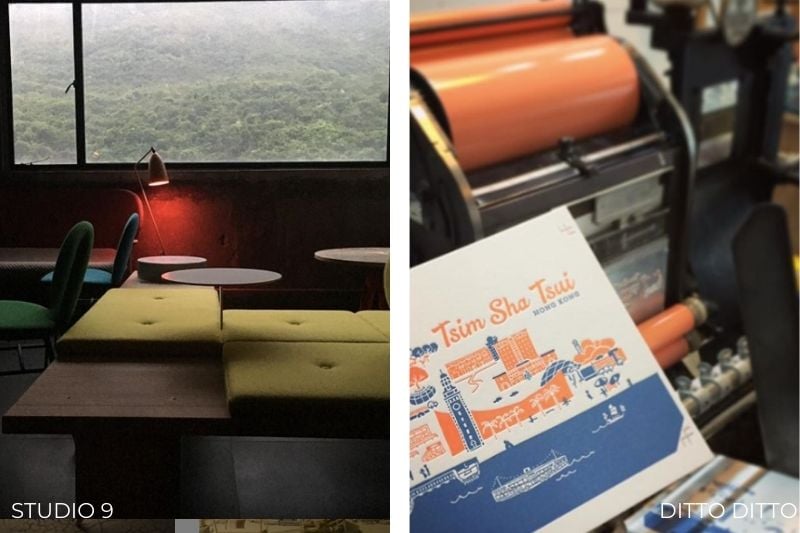
IG: @metasus.hk
IG: @dittodittoworks
Lump Studio
Nestled in a huge, luminous warehouse building, Lump Studio serves as a community for potters and ceramic makers alike. A fully-equipped space for you to flex your creativity, Hong Kong’s first membership-based pottery and ceramics studio provides a great alternative to your typical weekend plans, offering the unique opportunity to reconnect with your physical senses as you explore your inner creativity with your hands. Catering to all levels, this is the place to go to if you’re looking to pick up a new craft or hone an old one.
Address: 11A, Gee Luen Hing Industrial Building, 2 Yip Fat Street, Wong Chuk Hang, Hong Kong
Blindspot Gallery
Established in 2010, Blindspot Gallery was among the first to realise the potential of exhibiting contemporary photography alongside moving image-based art. It has since evolved to include and represent works from both emerging and established artists working across an array of media. As a Hong Kong-based contemporary art gallery, it has featured up-and-coming artists such as Trevor Yeung and Angela Su, as well as the late Mainland Chinese photographer Ren Hang, who was renowned for his racy nude portraits. If you’re curious or looking to expand your visual art vocabulary, be sure to consider visiting on your next trip to Wong Chuk Hang.
Address: 15/F, Po Chai Industrial Building, 28 Wong Chuk Hang Road, Wong Chuk Hang, Hong Kong
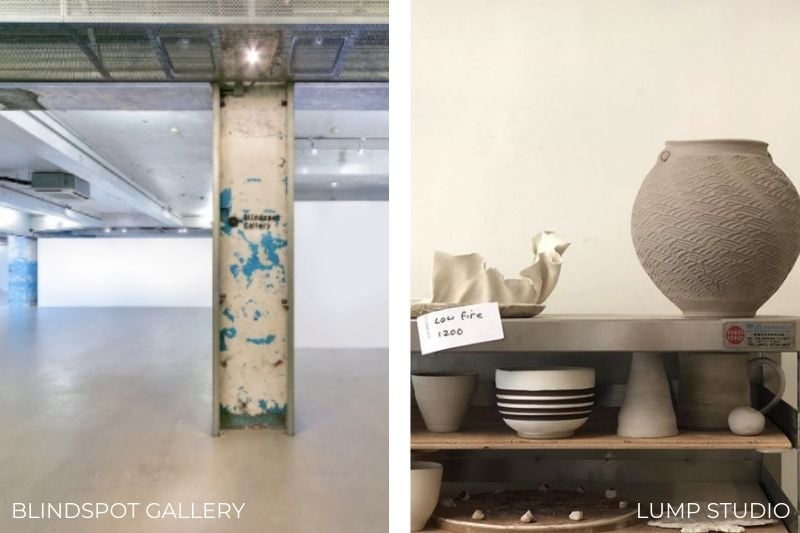
IG: @lumpstudio
blindspotgallery.com
The Hive Spring
Situated right across from Wong Chuk Hang’s MTR station, the Hive Spring is a huge 12,000 square-foot space tucked away in one of the neighbourhood’s nondescript industrial buildings. Formerly a high-end art gallery, the Hive Spring feels welcoming with its spacious workspaces, open-plan offices, and sunlit outdoor terrace. Functioning as a coworking space by day, the location is also home to a wide range of art exhibitions, music events, screenings and creative talks, making it the perfect space for creatives and fellow entrepreneurs to connect and grow.
Address: 3/F, Remex Centre, 42 Wong Chuk Hang Road, Aberdeen, Hong Kong
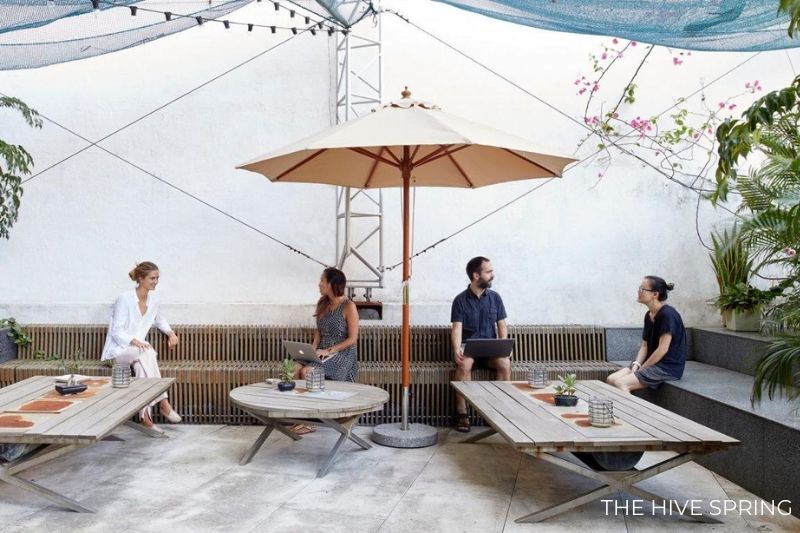
Wrapping Up
It would be an understatement to say Wong Chuk Hang is new to the art scene. Home to designers, curators, and artists, the neighbourhood has earned a reputation as the stomping ground for emerging creatives and artists. So whether you’re looking to stay up-to-date on who’s who in the art scene or launch a new creative endeavour of your own, this neighbourhood is a must-visit.
Related Articles
An Insider’s Guide to Wan Chai, Hong Kong
